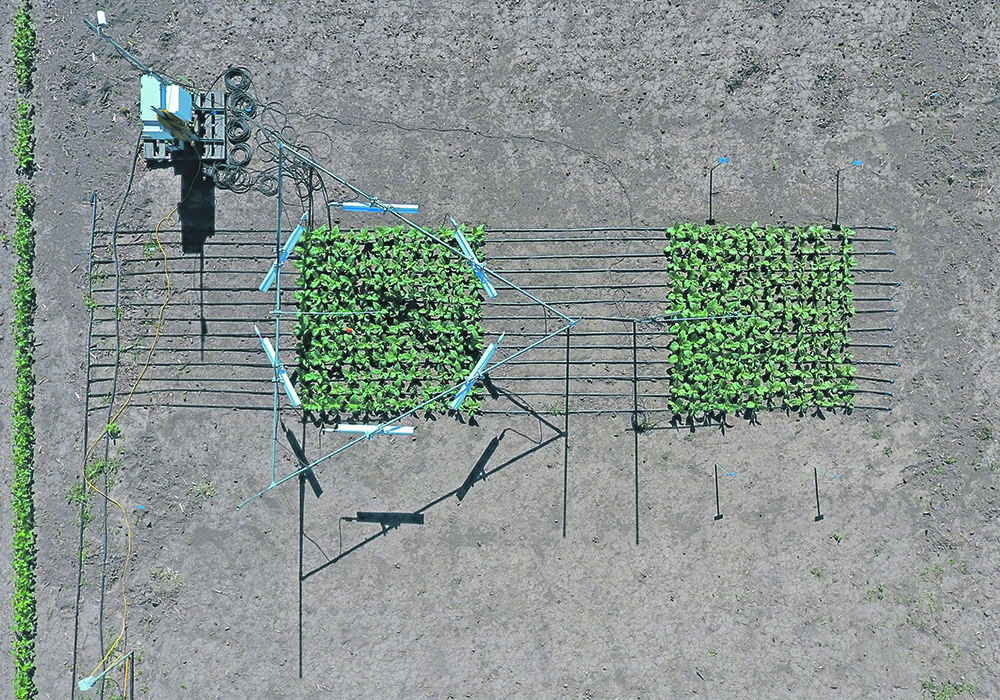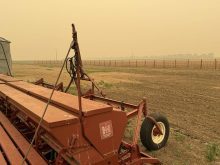Genetic modifications create synthetic pathways that helps plants fix more CO2 and less of the more yield costly O2
As global warming increasingly threatens crop production, scientists at the University of Illinois and the United States Department of Agriculture, Agricultural Research Service, have found a way to safeguard plants against the dangers of heat.
Researchers have improved the efficiency of a plant’s photorespiration through bypassing a photosynthetic shortcoming in a particular enzyme found in such crops as soybeans, rice and wheat.
The focus of the study was on an enzyme called Rubisco, which incorporates CO2 into plants during photosynthesis. But the shortcoming in Rubisco is that it mistakenly fixes oxygen instead of CO2 and that mistake triggers an energy draining recycling process.
Photosynthesis is the way in which plants convert carbon dioxide and water into sugars that promote plant growth.
“Rubisco is a carbon-fixing enzyme,” said Amanda Cavanagh, a lecturer at the University of Essex in the United Kingdom and an affiliate faculty with the Carl R. Woese Institute for Genomic Biology at the University of Illinois.
“We see that when plants are elevated with CO2 they can photosynthesize more and grow more. That is because Rubisco (is fixing) more carbon. But the problem with Rubisco is that, in the current climate, about 25 percent of the time Rubisco fixes oxygen instead of carbon and makes a compound that can’t be metabolized in the chloroplast.”
When Rubisco fixes oxygen instead of carbon it results in an energetically costly recycling process for the plant called photorespiration that involves several cell compartments. That energy used for photorespiration could have been used for photosynthesis and plant growth. As a result, the demands of photorespiration can reduce grain yield in crops by as much as 36 percent.
“We need to double crop production by 2050 to feed a growing global population,” said Cavanagh. “Not only are we not on track to do that but climate change is further complicating things. As temperatures increase, enzymes increase their rates. As Rubisco works faster, it fixes more oxygen since it gets a little sloppier. There has been quite a bit of work to find a version of Rubisco that doesn’t have the oxygen problem or has less of an oxygen problem. Our strategy was to try to genetically engineer a metabolic shortcut.”
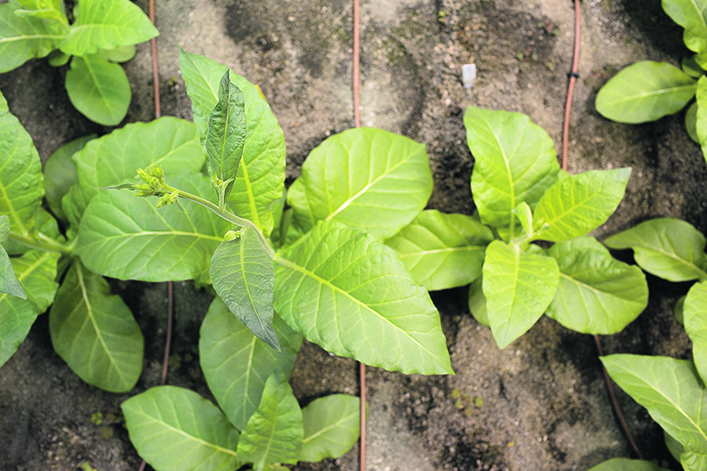
The objective of the study was to determine the potential for synthetic photorespiratory pathways.
The study focused on genetically engineering less energy-intensive alternative photorespiratory pathways into the crop chloroplasts with the expectation that the genetic manipulation should encourage increases in biomass production in field conditions. The goal was to test the efficiency of those engineered pathways under warming conditions.
The news release stated that the group partnered with researcher Carl Bernacchi, research plant physiologist with the USDA’s Agricultural Research Service. Together, they planted tobacco in a field and used heaters to keep the plants incrementally warmer than the ambient temperature. Half of the tobacco plants had been genetically engineered to have a less energy-intensive photorespiration process.
The team used transgenic lines of the Petite Havana tobacco plant given its relative ease to work with. The wild-type control plants were azygous plants, transgenic tobacco lines that had been through the transformation protocol but had lost the transgene through segregation.
They grew tobacco plants that had the alternative photorespiratory pathway under both current and elevated temperatures. Ten days after germination, the growth temperature was increased with the heaters by 5 C every 24 hours for five days in agricultural field conditions with the last treatment being 45 C.
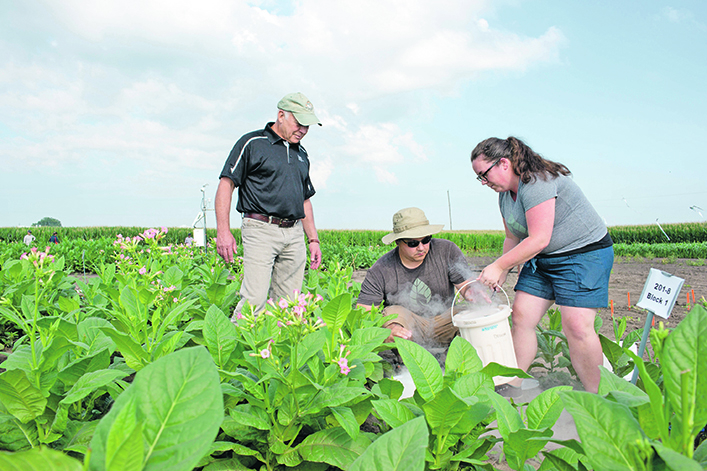
The engineered plants showed higher photosynthetic efficiency under the heated conditions than the control plants and produced an average 26 percent more biomass compared to the control plant average of 11 percent. The engineered plants sustained between 11 percent and 21 percent less yield loss under heated conditions compared to non-engineered plants.
The results supported the expectations of how heat affects photorespiratory losses and provided insight into how to sustain or improve yields in a warming climate.
“We know that as temperatures rise, Rubisco has a harder time distinguishing between carbon dioxide and oxygen, and so rates of photorespiration rise,” said Cavanagh. “Because of this, we thought manipulating photorespiration might be a way to help crops take the heat and mitigate yield losses caused by higher temperatures.”
Cavanagh is confident the approach will work on crops like wheat, soybeans and most vegetable crops.
“Work has also begun on potato at the University of Illinois,” she said. “There have been a couple of potato field trials so far and we are working on other strategies here at Essex.”
She said they expect to see interest in the research from crop breeders.
“This is one of the opportunities to use new technologies like CRISPR. We can’t seem to breed our way out of the Rubisco problem. If we select for varieties with high photosynthesis, we tend to get varieties with high photorespiration. There doesn’t seem to be a variation within that trait that we can break just through breeding. Because this is a synthetic pathway, we have to use a transgenic approach.”
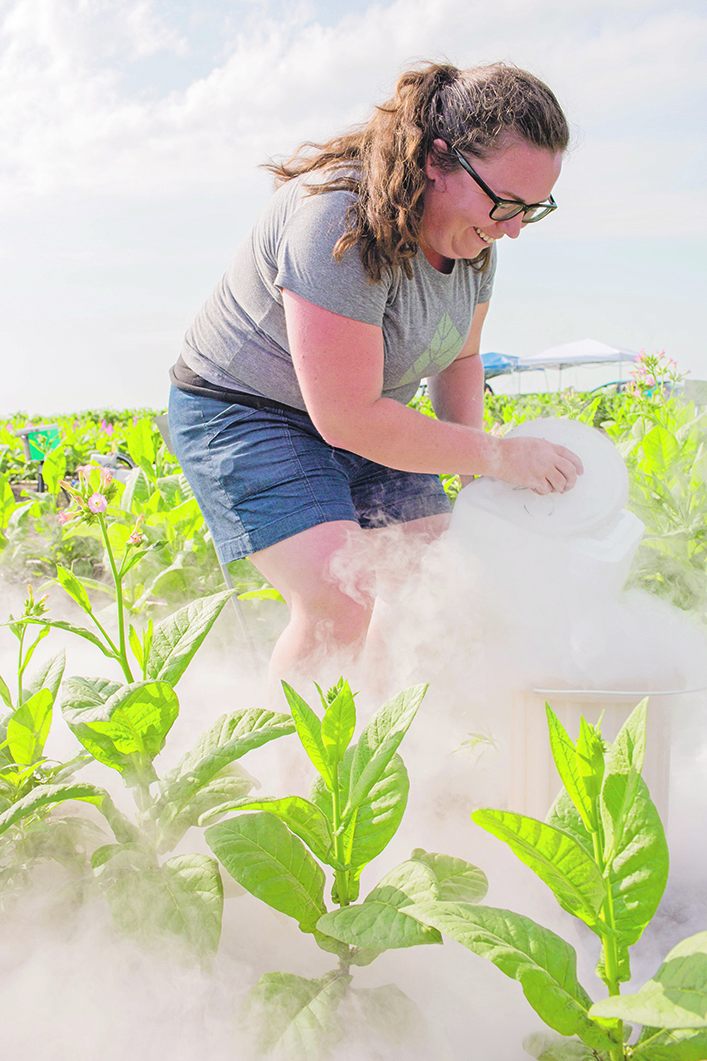
The research is part of Realizing Increased Photosynthetic Efficiency (RIPE), an international research project that aims to increase global food production by developing food crops that turn the sun’s energy into food more efficiently. RIPE is supported by the Bill & Melinda Gates Foundation, Foundation for Food & Agriculture Research, and the U.K. Foreign, Commonwealth & Development Office.
“One of the reasons we started to look at the temperature work is because, when we talk about climate projections to 2050, we know this won’t be an equal phenomenon for all parts of the world,” said Cavanagh.
She said that, for farmers involved in the RIPE project, they want to be sure to get seeds into their hands. But they first need to understand what their modifications are going to do.
“If we want to get seeds into those farmers’ hands in 10 to 15 years, we know they will be growing under much warmer conditions than now. As a plant scientist, producing enough food to feed the predicted mid-century population of nine billion with the pace of sustained increases in atmospheric carbon dioxide is the defining challenge of our career.”
The study was published recently in Plant Biotechnology Journal.

